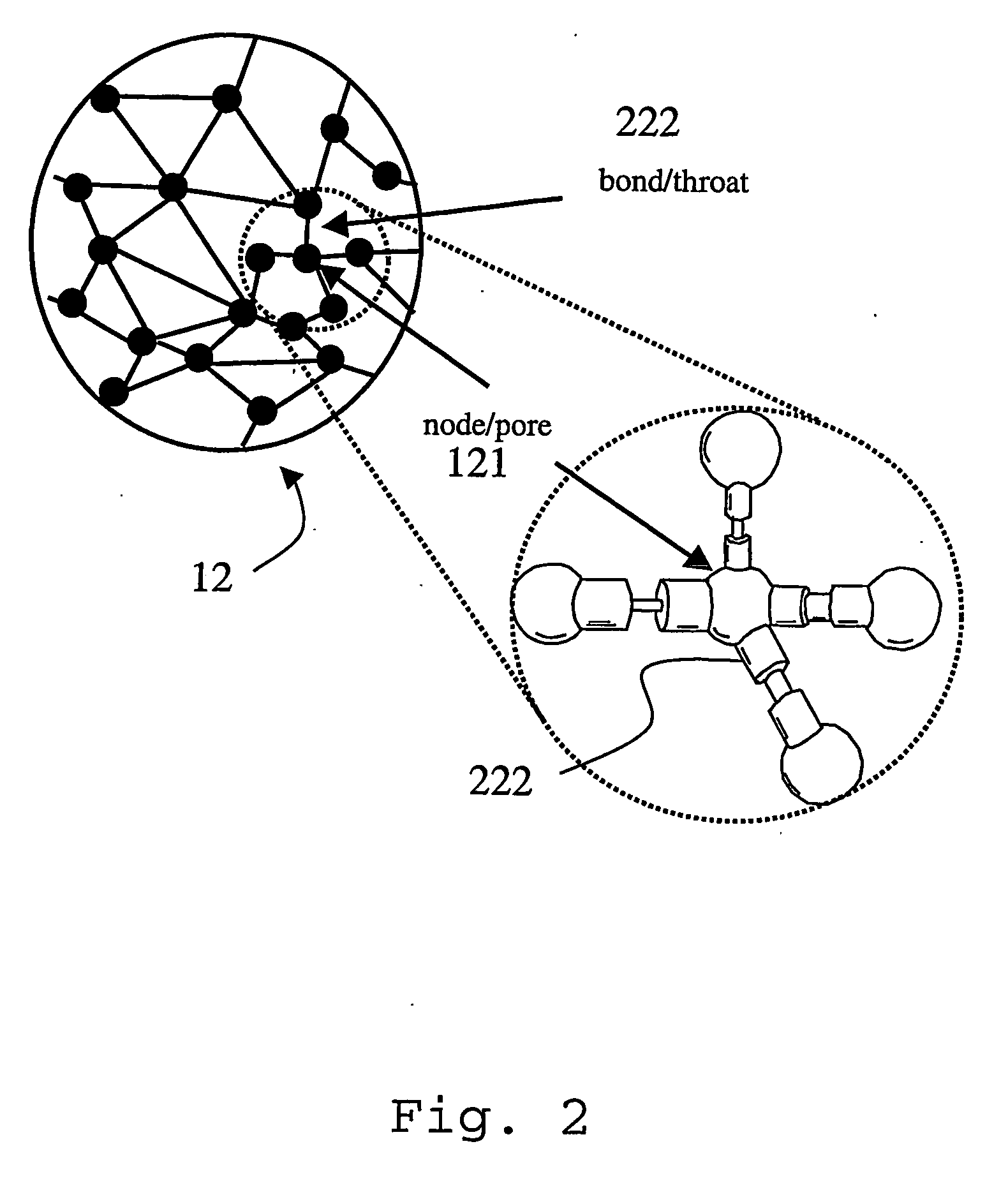Method and system for predicting the apparent flow conductivity of a heterogeneous medium
- Summary
- Abstract
- Description
- Claims
- Application Information
AI Technical Summary
Problems solved by technology
Method used
Image
Examples
example
[0061] In the present example, a power-law fluid flowing in a statistically stationary and non-isotropic network is considered. The following results are derived based on the formal similarity of equations (3) and (7). The model describing the local conductivities can be written: cij=π(n3n+1)(12μ)1 / nrij(3n+1) / n(Δ pijℓij)(1-n) / n o(16)
so that the logarithm and the derivatives of these conductivities, taken at Δpij / lij=Δp / L, can be written: ln cij(Δ pL)=ln(π(n3n+1)(12μ)1 / n)+3n+1nln rij+1-nnln(Δ pL)∂ln cij∂(Δ pij / ℓij)(Δ pL)=1-nn(Δ pL)-1∂2ln cij∂(Δ pij / ℓij)2(Δ pL)=-1-nn(Δ pL)-2(17)
[0062] Using variable c instead of cij and r instead of rij, and using decompositions similar to equations (15), the following equations, (18), are obtained: I1=0I2=∫Rd n w·w w12[n w·w+(1-n)w12]2Sa0a0(w)ⅆwI3=∫Rd n w14[n w·w+(1-n)w12]2Sa0a0(w)ⅆw(18)
where a0 is the normalised fluctuation of the log-conductivity, ln c, function o...
PUM
| Property | Measurement | Unit |
|---|---|---|
| flow conductivity | aaaaa | aaaaa |
| apparent viscosity | aaaaa | aaaaa |
| elongation rates | aaaaa | aaaaa |
Abstract
Description
Claims
Application Information
 Login to View More
Login to View More - R&D
- Intellectual Property
- Life Sciences
- Materials
- Tech Scout
- Unparalleled Data Quality
- Higher Quality Content
- 60% Fewer Hallucinations
Browse by: Latest US Patents, China's latest patents, Technical Efficacy Thesaurus, Application Domain, Technology Topic, Popular Technical Reports.
© 2025 PatSnap. All rights reserved.Legal|Privacy policy|Modern Slavery Act Transparency Statement|Sitemap|About US| Contact US: help@patsnap.com



